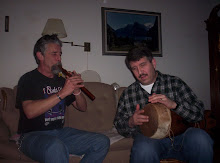 The Armenian Alphabet was created in 405-406 AD by Mesrop Mashtots and Sahak Patrev. The impetus was to be able to translate the bible into Armenian but other factors included creating and maintaining a national identity by having a unique alphabet.
The Armenian Alphabet was created in 405-406 AD by Mesrop Mashtots and Sahak Patrev. The impetus was to be able to translate the bible into Armenian but other factors included creating and maintaining a national identity by having a unique alphabet.The original alphabet had 36 letters which, although some were borrowed from Greek and Syriac alphabets, are unique. In the Cilician period (12th Century) two letters were added in order to be able to spell some of the words and names that the Crusaders brought. These letters were an "f" and an "o". Now there are 38 letters.
This picture is from the Alphabet Field in Armenia. In a very rural area, this wonderful monument stands amidst wandering cows and other livestock. The letters are beautifully carved out of stone. The closest one that looks like a "U" is the letter "AYP" or "A."

